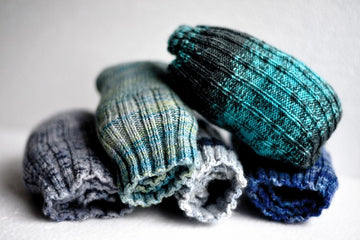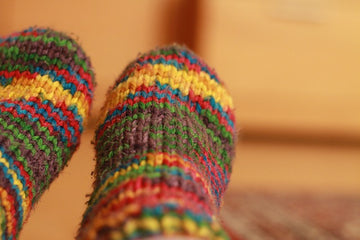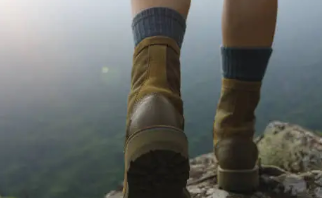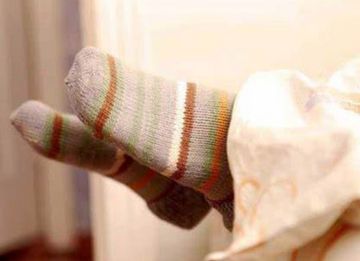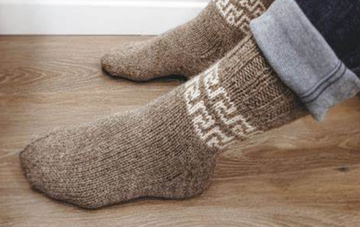
When considering the best type of socks to wear during the summer, wool may not immediately come to mind. However, wool socks, especially those made from merino wool, offer several advantages that make them ideal for warm weather. Their superior moisture management, high absorption capacity, odor resistance, and antibacterial properties provide comfort and protection for your feet in hot conditions. This article explores why wool socks outperform other materials like cotton and polyester, particularly in summer, and why they are a great choice for anyone dealing with sweaty feet or spending long hours in the heat.
Are Wool Socks Good for Summer
Wool socks are the ideal choice for summer wear due to their superior moisture management, high absorption capacity, odor resistance, and antibacterial properties. Whether you are working long hours on a construction site or enjoying outdoor activities, wool socks will keep your feet dry, comfortable, and healthy. If you haven't tried wool socks for summer yet, it's time to make the switch and experience the benefits firsthand.
Superior Sweat-Wicking Abilities
Wool is significantly better at wicking sweat than both cotton and polyester. Wool can wick moisture 25% more efficiently than polyester and 15% better than cotton. Despite the common belief that synthetic materials are superior for moisture management, wool outperforms them all. Most "sweat-wicking" socks on the market today are made from polyester, which is a misleading marketing tactic. While polyester does wick sweat, it is not nearly as effective at keeping your feet dry compared to Merino wool. If you struggle with sweaty feet, wool socks can be a game-changer.
High Moisture Absorption Capacity
Wool can absorb up to 35% of its weight in moisture before feeling wet, compared to cotton's 14% and polyester's mere 1%. This means wool socks keep your feet feeling dry much longer. Polyester, with its low moisture uptake, makes your feet feel wet almost immediately after sweating starts. Cotton fares better, but still only provides a few hours of dryness. In contrast, Merino wool's high absorption capacity ensures that even after several hours of activity, your feet remain dry and comfortable.
Odor Resistance
Wool has natural odor-resistant properties. In a study involving "skilled olfactory sensors" who assessed the smell of dirty socks, wool socks scored significantly better than cotton and polyester. Initially, wool socks had a lower odor score, and even after being worn for several days, they did not get much stinkier. Polyester socks, on the other hand, were extremely smelly from day one and only got worse over time. The natural properties of wool prevent it from harboring bacteria that cause odors, making it the best choice for long-lasting freshness.
Bacteria Resistance
The structure of wool fibers inhibits the growth of bacteria, which is why wool socks remain relatively odor-free even after extended wear. This is crucial in preventing foot infections such as athlete's foot. Cotton socks also pick up bacteria but to a lesser extent once they are fully dry. Polyester, however, acts almost like a petri dish, promoting bacterial growth and resulting in bad odors very quickly. Wool’s natural antibacterial properties mean your feet stay healthier and more hygienic throughout the day.
Merino Wool Creates a Dry Barrier
Merino wool, in particular, creates a barrier that repels moisture from the environment. This fine knit structure not only helps in keeping feet dry but is also beneficial for people with skin conditions like eczema. By maintaining a dry environment, wool socks help prevent fungal infections such as athlete's foot. For those who have experienced foot issues, the dry barrier provided by Merino wool is invaluable. It helps maintain healthy, comfortable feet even in the most challenging conditions.
Do Wool Socks Keep Your Feet Cool in the Summer
Yes, wool socks can help keep your feet cool in the summer. Wool has excellent moisture-wicking properties, meaning it can absorb a significant amount of moisture (up to 35% of its own weight) and then release it as vapor. This ability to wick sweat away from your skin and allow it to evaporate makes wool much more efficient at cooling your feet compared to other common sock materials. For comparison, cotton can absorb around 14% of its weight in moisture, and polyester only about 1%. Thus, wool's superior moisture management helps to keep your feet dry and cool even in warmer weather.
What’s the Best Sock for Hot Feet
The best socks for people with hot, sweaty feet are typically made from merino wool.
Merino wool can absorb up to 35% of its weight in moisture before it starts to feel wet, significantly outperforming cotton (14%) and polyester (1%).
Wool wicks sweat away from your skin more effectively than other materials. This means it draws moisture to the outer surface of the sock, where it can evaporate more quickly.
The combination of high moisture intake and fast evaporation helps to cool your feet efficiently, making merino wool socks ideal for keeping feet dry and comfortable even in hot conditions.
Merino wool is naturally temperature-regulating. It keeps your feet cool in the summer and warm in the winter, providing comfort across a wide range of conditions.
Therefore, merino wool socks are highly recommended for those who experience hot, sweaty feet, as they provide excellent moisture management and cooling properties.
Are Wool Socks Good for Hot Feet
Yes, wool socks, especially those made from merino wool, are excellent for hot feet.
The finer fibers and natural air spaces in wool make it an effective insulator. This helps regulate temperature by keeping feet cool in the summer and warm in the winter.
Merino wool is known for its softness, making it comfortable to wear directly against the skin, unlike some coarser wool types.
Merino wool is highly absorbent, capable of removing both excess foot moisture and the uncomfortable heat that can build up in your shoes. This makes it particularly effective at managing sweat and preventing your feet from feeling damp.
Wool wicks moisture away from your skin and allows it to evaporate, helping to keep your feet dry and cool.
Is Wool Too Hot to Wear in Summer
Wool, particularly merino wool, is not too hot to wear in the summer.
Wool wicks moisture away from the skin, which helps keep you cooler and drier. This is especially beneficial in situations where sweat is a possibility.
Wool has natural insulating properties that work to regulate temperature, keeping you cool in the summer and warm in the winter. The finer fibers and natural air spaces in wool contribute to this temperature regulation.
Wool is highly breathable, allowing air to circulate and helping to prevent overheating.
Unlike cotton and linen, merino wool doesn’t wilt or wrinkle easily in hot, humid weather, maintaining a neat appearance throughout the day.
Summer weight wool is designed to be lighter and more comfortable in warm conditions, making it a suitable option for summer wear.
Therefore, wool, especially merino wool, can be very comfortable in the summer, providing both cooling and moisture management benefits.
What Is the Best Material for Socks in Summer
When choosing socks for summer, the best materials are those that are breathable, moisture-wicking, and lightweight. Here are some top choices.
- Merino Wool
Benefits: Merino wool is highly breathable, moisture-wicking, and temperature-regulating. It can keep your feet cool and dry by wicking sweat away and allowing it to evaporate. It’s also soft and comfortable against the skin.
Drawbacks: Generally more expensive than other materials.
- Cotton
Benefits: Cotton is lightweight and breathable, making it a popular choice for summer socks. It’s comfortable and readily available.
Drawbacks: Cotton doesn’t wick moisture as effectively as wool or bamboo, which can lead to damp, sweaty feet in very hot conditions.
- Bamboo
Benefits: Bamboo fibers are naturally moisture-wicking, breathable, and have antimicrobial properties, which can help reduce odors. Bamboo is also very soft and comfortable.
Drawbacks: Bamboo socks can be less durable than other materials and might not be as widely available.
- Wool Blends
Benefits: Blends that include wool, such as merino wool blended with synthetic fibers, offer the benefits of wool (moisture-wicking, breathable) while improving durability and stretch.
Drawbacks: The presence of synthetic fibers might reduce breathability compared to pure wool.
- Avoid Synthetic Materials
Reason: Socks made from synthetic materials like polyester tend to trap heat and moisture, which can make your feet feel hot and sweaty.
In summary, for summer socks, prioritize materials like merino wool, cotton, and bamboo for their breathability, moisture-wicking properties, and comfort. Avoid synthetic materials that can trap heat and moisture.
Are Wool Socks Better Than Cotton for Summer
Wool socks, particularly those made from merino wool, are generally better than cotton socks for summer due to several key factors.
- Moisture-Wicking: Wool has superior moisture-wicking properties compared to cotton. Wool can absorb a significant amount of moisture (up to 35% of its weight) and then release it as vapor, keeping your feet drier and cooler.
- Temperature Regulation: Wool naturally regulates temperature, helping to keep your feet cool in the summer and warm in the winter. Cotton, on the other hand, tends to retain moisture, which can make your feet feel damp and hot.
- Breathability: Wool is highly breathable, allowing air to circulate around your feet, which helps prevent overheating. Cotton is less effective in this regard, as it can become saturated with sweat and lose its breathability.
- Odor Control: Wool has natural antimicrobial properties that help control odor. Cotton does not have the same level of odor resistance and can start to smell if it becomes damp with sweat.
- Comfort: Merino wool is soft and comfortable against the skin, making it suitable for extended wear even in warm conditions.
In conclusion, wool socks are generally a better choice than cotton socks for summer due to their superior moisture management, temperature regulation, breathability, and odor control.
Do Wool Socks Dry out Your Feet
Wool socks do not dry out your feet; rather, they help manage moisture effectively.
- Moisture-Wicking: Wool socks are excellent at wicking away moisture from your skin. They absorb sweat and move it to the outer surface of the fabric, where it can evaporate. This keeps your feet dry and prevents the build-up of moisture that can lead to discomfort or skin issues.
- Breathability: Wool is a highly breathable material, which allows air to circulate around your feet. This breathability helps regulate temperature and prevents overheating.
- Temperature Regulation: Wool provides insulation, keeping feet warm in cold conditions. However, due to its moisture-wicking and breathable properties, it also keeps feet cool and dry in warmer conditions.
- Comfort: Wool, especially merino wool, is soft and comfortable, making it suitable for extended wear without causing irritation.
Overall, wool socks help maintain a balanced level of moisture, keeping your feet comfortable without drying them out. This makes them a versatile choice for different weather conditions, including both summer and winter.
Final Words
In summary, wool socks, particularly those made from merino wool, are an excellent choice for summer due to their exceptional moisture-wicking, high absorption capacity, breathability, and natural antibacterial properties. These qualities help keep your feet dry, cool, and odor-free even in the hottest conditions. Whether for daily wear, outdoor activities, or extended periods on your feet, switching to wool socks can provide significant benefits over traditional cotton or synthetic socks. By choosing wool, you can ensure your feet stay comfortable, healthy, and fresh throughout the summer months.
Read More:
Why Do We Wear Socks
Do You Wear Socks with Climbing Shoes
What Color Socks with Brown Shoes
What Socks to Wear with Loafers
What are Grip Socks




